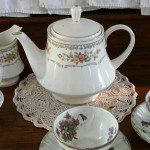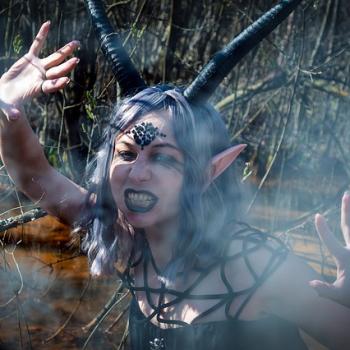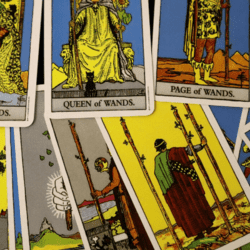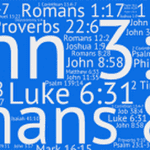In the 1970s Aidan Kelley tagged the Autumn Equinox with the name Mabon, and it took — in large part because Starhawk repeated it in her hugely popular first book, “The Spiral Dance.” There’s still a lot of debate over whether that’s an appropriate name for it, mostly because we don’t know much about the persona behind the name. Quite a few people believe the problem is simply that the myths don’t support the timing at the Autumn Equinox, but I think they do.
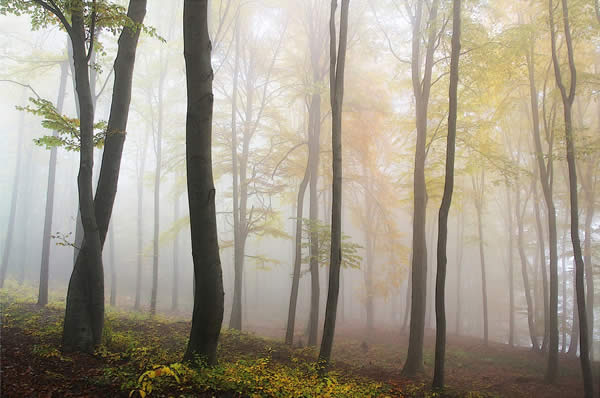
Unlike most of our Celtic names for Sabbats, Mabon is Welsh, meaning simply, Son. In full, Mabon ap Modron, Son, son of Mother.
H.R. Ellis-Davidson quotes the Venerable Bede as translating Modron as the Mothers — plural. Modern translators give it as the Mother — singular. Linguistic evidence may well support the plural interpretation, for although Mabon ap is unequivocally Welsh, Modron may not be: in Germanic languages the singular of Modron becomes Modr — recognizably mother. Suddenly we have, not as was always believed a corruption of the Latin Matrona, but good Germanic, most likely Saxon. All very scholarly, but it doesn’t tell us much about Mabon, does it?
Actually, it does. The first thing it tells us is that he (more likely, He) is old, so old he’s the son of a Mother, rather than a Father. Mabon may be from a matrilineal culture, as we know pre-Christian Wales to have been. If the Saxon connection holds up, He may be the result of a cultural fusion, indicating more borrowing between the British Celts and the Saxon invaders than has previously been assumed. And He bears many of the signs of a sacred king, losing whatever mortal name he had to become only the Mother’s Son, ruling and dying in Her name alone.
Well into the Christian period, the Mothers referred collectively to the female land spirits¹ known to the Norse as Disir and elsewhere by many, mostly now lost, other names. The plural name recognized the multiplicity of that energy/entity/being we now call the Great Mother archetype. The Mothers were conceived-of as a kind of pool of feminine ancestral energy, not in the same category as the “high” Gods, the ones in Asgard, or at Tara or the Court of Don, but deeper, older, and to most people actually more important.
The Mothers’ function was to give life-energy to a particular place, and to keep that energy flowing in a form helpful to human endeavor. Such a place was marked by a confluence of roads, a sacred grove, standing stone, or spring. It’s likely the well-tending damsels so common in Arthurian and other Medieval romances are the direct descendants of local Mothers.
The only myth we have about Mabon says that within minutes of his birth, he was stolen from between his mother’s side and the wall next to which she lay. By whom, is not said. He was imprisoned in a castle, on an island in a lake, until his uncle, King Arthur, freed him to participate in the adventure called The Wooing of Olwen.²

It appears that the interval between the abduction and the rescue of Mabon may have been only a few years, or even as little as a few months, yet Arthur rescued not an infant but a young man. After which Mabon vanishes from the body of myth. Apparently, the only elements of Mabon’s life that were important enough to be passed on were his birth, abduction, and rescue; even his exploits (if any) during the Wooing were not recorded. Yet it is these elements which tell us who he may have been: There is another divine Son in Welsh mythology with a remarkably similar tale. And this tale names Names.
The Tale of Pwyll, Prince of Dyfed,³ from the Mabinogion, is the story of a semi-divine King or Prince of North Wales. Single and without an heir, he spends the night on top of a sacred mound, hoping to “see a wonder” that may guide him in his search for the wife his people beg for and his counselors continually urge on him.
There he encounters a beautiful faery horsewoman whom, after many trials that aren’t germane here, he marries. They live entirely as mortals, and eventually conceive a child, to the great rejoicing of the people.
In the meantime, one of Pwyll’s vassal knights has a strange problem: every November eve his best mare foals, and every year the foal vanishes before morning. This year he decides that’s not acceptable. He sits up all night in the stable, and shortly after midnight a monstrous claw comes in through the window, seizes the foal, and begins to withdraw. The good knight, Teirnyon, takes his sword and severs the claw. He then discovers within the claw not only his foal, but a baby boy.
He and his wife, childless, decide to raise the boy as their own, and to give him the foal to break when he’s old enough. To their shock, though, the boy grows at the same rate as the foal. By the next autumn, he’s a strapping youth who can easily keep up with the yearling horse. And his foster parents begin to notice how much he looks like their Prince. Their consciences begin to bother them about keeping him, and they travel to the palace to show him to Pwyll.
The situation at the palace is anything but normal. The Queen has been condemned to stand at the mounting-block, offering to carry all visitors into the palace on her back. The crime for which she endures this bizarre punishment is infanticide: she was accused by her ladies in waiting of giving birth to a son and then eating him. Her story was that shortly after she gave birth, the previous November eve, a monstrous claw came through the window, seized the baby from between her side and the wall next to which she lay, and withdrew. The counselors of the court found this rather unbelievable, accepted the ladies’ story, and sentenced the Queen, since she had done something only animals do by eating her own young, to function not just as an animal but as a beast of burden.
When Teirnyon and his retinue arrive, all is made clear. Pwyll and his Queen acknowledge the boy as their own. His mother gives him a name: Pryderi. Taken from the words she spoke when she learned the truth, it means, roughly, Sorrow’s End. Pwyll and the Queen commend and richly reward the knight for his care of their son, and send them all home again, this time to raise not just a foundling but the royal fosterling.
So we have a name for the Mabon. And we know the Modron’s as well.
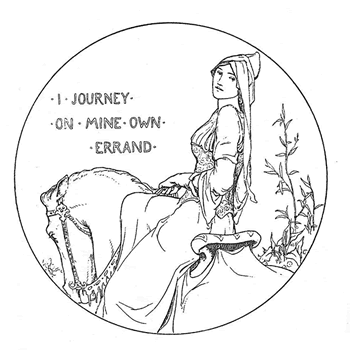
In Celtic countries, it was the custom that children inherited from whichever parent was of the higher rank. A Goddess definitely outranks a king. Mabon ap Modron is none other than Pryderi son of Rhiannon, Lady of the singing birds. And Rhiannnon is Herself an aspect of the Lady of Sovereignty, Epona. Her name in turn relates to “hippos,” horse, and explains both the way in which Pwyll met Her and the form Her punishment took, to bear guests on Her back. It also makes it possible to connect Her myth to those of other Horse-Goddesses of the British Isles, such as Macha.
The human-child and the foal are presented as virtual brothers, growing at the same rate, both great runners. Possibility certainly exists for an older version of the myth in which they were actually twins, both sons of Rhiannon. Such human/animal twinnings are common in myths world-wide, and always indicate a powerful totem.
All this makes one curious about the venerable White Horse of Uffington. How old is it? Who drew it on the chalk, and is it an icon of Rhiannon/Epona? It is known that the down-lands around the White Horse effigy were once the stronghold of several inter-related tribes of Britons who lived by horse-herding and raiding. They lived in palisaded forts, practicing no agriculture, not because it was unknown to them but because they held farmers in contempt. Though greatly feared by their lowlands neighbors, their wild, undisciplined fighting style was no match for the Roman cavalry, and they were destroyed.⁴ It has long been believed that the White Horse was carved into the chalk by these great horsemen.
But the White Horse may equally be no older than the Saxons. History tells us that the Saxon invasions were led by two brothers, Hengist and Horsa. Their names mean Stallion and Mare, and some historians believe that they were co-priests of the powerful Saxon horse-cult.⁵ They may have been “brothers” not in the sense of sons of the same mother, but by affinity and/or oath, and given the gender difference of their names, ritual homosexuality may have been a feature of their priesthood.
Folk-legend around the White Horse makes it a place to go for supernatural help, like the Cerne Giant, when one needs healing or wishes to conceive. The procedure varies from mere touching of the chalk to having sex within the figure. (N.B. Considering how very visible a pair of dark figures would be against the white chalk, they would have to be pretty desperate!) This returns us to the myth of Pwyll and Rhiannon, and its repeated theme of the demands of the people and counselors that the Prince produce an heir.
It was the need for an heir and thus a wife which sent Pwyll to the fairy mound in search of “a wonder,” this need which made his counselors urge Pwyll to set Rhiannon aside when she did not conceive immediately, this need which made her ladies, in fear for their own lives, accuse her of cannibalism. The very fertility of the land depended on the demonstrated potency of the King, the fecundity of the Queen. It was especially urgent that a good king, a wise ruler as Pwyll was said to be, consolidate his right to rule by getting an heir on the Queen, since it was through her connection to the land, the living embodiment of the Modr, that he ruled at all.
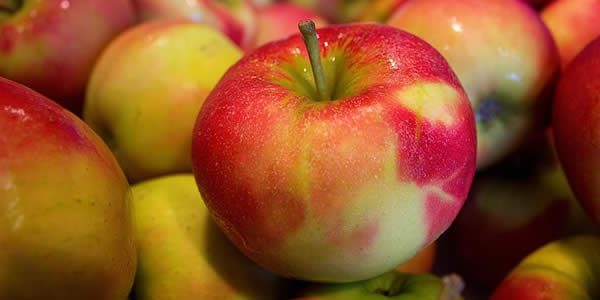
Our Mabon is a harvest festival, centering around the apple harvest. Though like other harvest rites it centers around a God, it is the only one in which the theme does not include ritual sacrifice or death. Even the wrongly-accused mother was not condemned to death, as surely must have been the sentence for such a heinous act, but to atonement through an onerous and symbolic punishment.
Unlike cereal grains, or for that matter most plants, a fruit tree need not die in order to make seed. Like humans and other land-animals, fruit trees bear “young” without apparent harm. Humans can eat fruit entirely without guilt, indeed, our eating the fruit and spitting out the seeds helps the tree reproduce. John Barleycorn must be propitiated; Mabon needs only liberation. And that may be His mystery.
It is Mabon’s connection to the apple which re-connects him with Arthur, and with the Mothers-plural. Much of the Arthurian myth takes place in and around Glastonbury, strongly identified with Avalon – the Isle of Apples and of otherworldly women. Arthur’s sword came from the Lady of the Lake, identified as the Welsh Goddess Angharad, who dwelt on an island which seemed to – or perhaps did – move around, disappearing whenever mortals would intrude. The real-life Glastonbury Tor is itself the magically disappearing island, since in Spring the lowlands around it used to flood, leaving the hill an island, which then gradually drained away during the Summer. By September the land was bone dry and one could walk to the Tor. It is to Avalon that Arthur’s Queens – the fairy women who guided his destiny – carried him at his death.
It is difficult at first to find a connection between the apple and the horse except for the well known equine love of eating them. But we’ve established the connection between apples and water above, and the connection in what we could call the pan-European mythos between the horse and water is equally strongly established. From Poseidon (“Spouse of the Goddess”), the earth-quaking sea-god who took the form of a horse, to the name “white horses” for the waves kicked up wind, the horse and the sea are linked. In Celtic myth, we encounter Mannanan, rider of the horse Wave-Sweeper who galloped over the waves, said to be the son of nine mothers – that is, the nine waves.
So the connection between apples and horses is through their function as revealers of the mysteries of the Modron, the Earth Mother(s). Both horse and apple are also connected with water, with its ability to both guard the mystery – Mabon on the island prison – and grant limited access to it, as at Glastonbury.
A final clue, for me, was Alfred Watkins’ The Old Straight Track,6 in which he points to evidence of a priesthood that was responsible for the creation and maintenance of the trackways – what he called ley lines – between what Watkins thought were commercial centers but later research believes were more likely to be sacred sites. These priests, he deduced from local place-names, either had no names or were called exclusively by their titles.
So who was Mabon? Not just whose son was Mabon? But who was He in his own right?
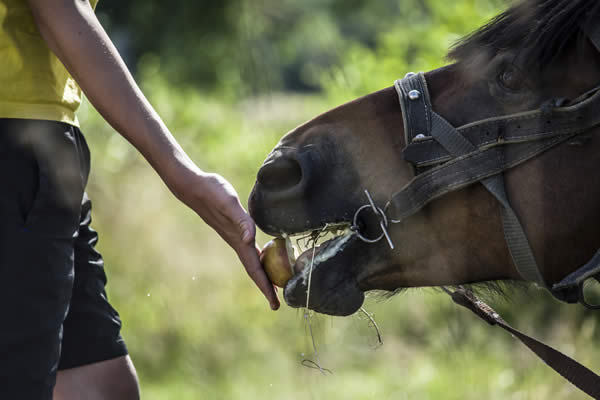
Look at the clues: Out of horses and apples and mystical islands, out of names and lack of them, out of Mothers nine or thirteen or nine-times-nine, an answer forms. I have to conclude that Mabon had a much more extensive and influential role in his world than that of mere abductee or sacred prisoner. Born at Samhain and reaching young manhood the following Autumn, it’s entirely appropriate that the mysteries of Mabon be celebrated at the Equinox.
Who was Mabon? He was the child of the Earth and the Otherworld, hereditary priest of the Mothers and King of Avalon.
References
- http://www.indigogroup.co.uk/twilight/ast0220.htm
- Celtic Fairy Tales, by Joseph Jacobs, [1892] at http://www.sacred-texts.com/neu/celt/cft/cft16.htm
- http://www.sacred-texts.com/neu/celt/mab/mab20.htm
- There is some evidence that the mysterious and stubbornly primitive fenlanders (conjectural source of Tolkien’s mewlips), who survived among England’s fens and bogs until the great drainages of the last 200 years, may have been refugees from these tribes. However, when I tried to trace where I read this interesting tidbit so I could provide a reference: nada.
- http://www.theclanproject.org/history/who-was-hengist
- http://www.amazon.co.uk/The-Old-Straight-Track-Beacons/dp/0349137072 and https://en.wikipedia.org/wiki/The_Old_Straight_Track
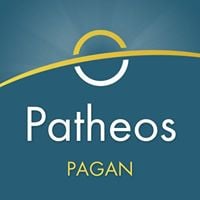
Patheos Pagan on Facebook.
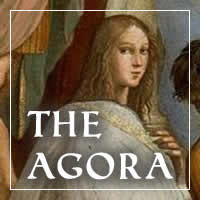
the Agora on Facebook
The Rantin’ Raven is published on alternate Saturdays here on the Agora. Subscribe via RSS or e-mail!
Please use the links to the right to keep on top of activities here on the Agora as well as across the entire Patheos Pagan channel.


